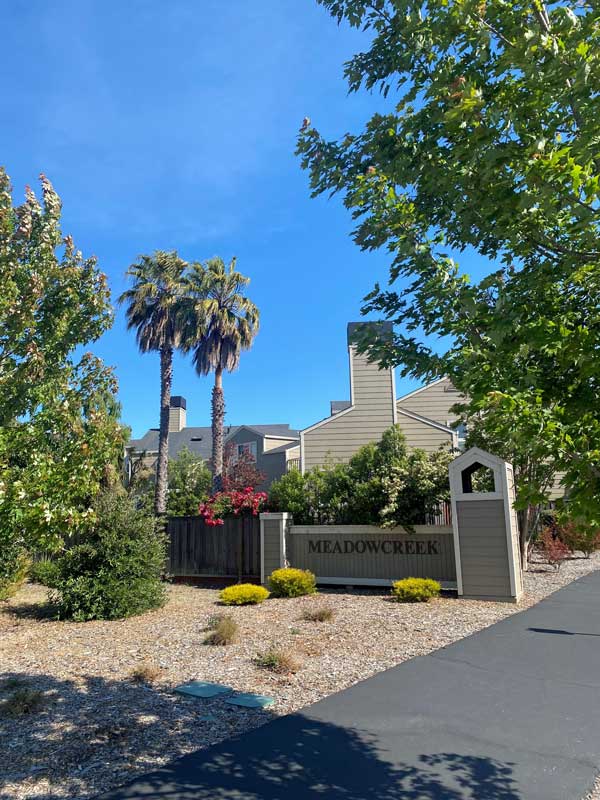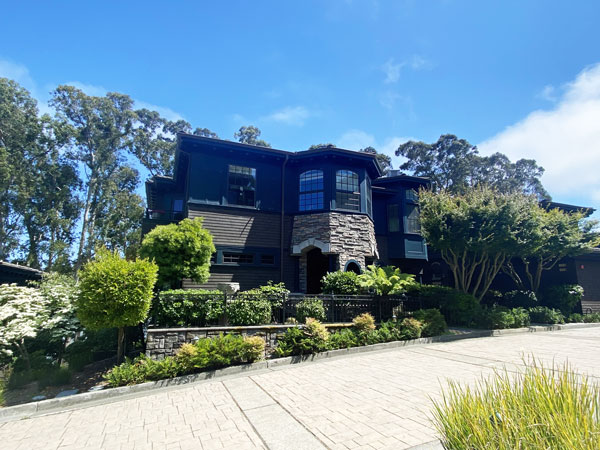Evaluating the Finances of a Townhouse or Condo Association
If you’re buying a townhouse or condo in Marin County, one significant task that demands your diligent attention is a review of the Homeowners Association Documents (HOA docs). When you buy a townhouse or condo, you’re buying into a community. Because of this, understanding the financial health of the HOA, monthly fees, and specific rules and regulations, becomes crucial.
What does it cost to be part of an HOA?
When you are a member and co-owner of an HOA, you have to pay a monthly fee. In 2023, typically monthly fees were $400 to $900.
What do HOA fees cover?
HOA fees can cover a variety of services and amenities:
- Most HOA fees pay for exterior maintenance of the buildings such as siding, roofing, and painting.
- For some, water and trash collection, common area landscaping, and sometimes unique elements like window cleaning or dryer duct cleaning are included.
- If the units are attached, the fee includes hazard insurance.
To make sure what the fees cover, you must refer to the CC&Rs in the HOA documents (see below).
What amenities are available?
Some communities offer amenities like a pool, tennis court, meeting room, or gym. These can add to your quality of life and enhance the property’s value. Their upkeep also increases the monthly fee.
These are key areas you should focus on when reviewing HOA documents
CC&Rs
The Covenants, Conditions, and Restrictions (CC&Rs) are a legal document that defines how the HOA works. Each HOA is a corporation registered with the state, and each homeowner is an owner of the corporation. The CC&Rs, plus the Bylaws, are the governing documents of this “non-profit, mutual benefit corporation.”
When diving into the CC&Rs, look specifically for association responsibilities. This will show you what the HOA commits to maintaining for your home and what is left to you. For example, the association may repair and replace the roof, but skylights may be your responsibility.
Scan through the table of contents. You may see other items of interest.
Reserve Study
It’s essential to check whether the HOA has a current reserve study. This annual study indicates if they are setting aside adequate funds for future major repairs and replacements.
By state law HOAs may pay for repairs and replacements either by saving part of the monthly fees into a reserve account, or by assessing homeowners periodically for special projects as needed. In the second case, there are still monthly fees but they are used primarily to pay for recurring operating expenses; for example, insurance, landscaping, and water. Assessments will pay for major projects, like siding or painting.
Percent funded
This percentage indicates the amount available in a reserve fund to pay for repair or replacement projects; for example, exterior painting, roofing, or pool repairs. 40% or higher is an acceptable number for percent funded. A lower number indicates one of two conditions:
- The HOA has recently completed major projects. The reserve fund is dynamic. If it was recently used to pay for major work, it may take several years to fill it up for the next round of scheduled repairs.
- The HOA has not collected enough in its reserve fund and is limping along with repairs and maintenance.
100% funding is rare. If you see 90-100% funded, it could indicate that the HOA has been collecting more than needed or has neglected repairs.
Remaining Useful Life
If you see many projects that need to be done now or in the next few years and the percent funded is low, the association may be struggling to keep up with its obligations.
Current Useful Life/Expected Useful Life
Compare these numbers for major projects; for example, painting, roofing, siding, and drainage. If you see that the current useful life is high, reserve funds are being used as intended. This could explain a temporary reduction in the percent funded.
Recommended increases in monthly fees
The reserve study will often have a Reserve Funding Plan that recommends yearly increases in monthly fees. Increases of 1-3% are often appropriate to keep up with costs of maintenance. Larger increases may indicate that the association needs to increase their reserve fund to cover future expenses. Recommended increases are only recommendations; they must be approved each year by the HOA board of directors.
Special assessments
These may be recommended because the reserve account is inadequate to meet major repairs and these repairs cannot be deferred to future years. Recommended assessments are not actual assessments until the HOA board approves them.
Annual Financial Report
According to state law, an accountant must prepare a budget each year. This describes operating costs and the amount saved every month into a reserve account. You can see what it costs to operate the association, the major costs, and increases or decreases in these recurring costs.
Minutes of Board Meetings
The minutes of the board of directors for an HOA can inform you of issues reported by homeowners, plans for maintenance and improvements, legal issues, and more. As there are no mandated policies for writing minutes, some may be more informative than others.
Pet Policy
Every HOA has a policy on keeping pets within each unit. Often, the HOA adopts the pet policy of the city or town. Occasionally, there may be special circumstances; for example, prohibiting pets that may be incompatible with nearby wildlife. You can find the pet policy in the CC&Rs or Rules and Regulations that complement the CC&Rs.
Rental Policy
Understanding the HOA’s rental policy is important, particularly if you are buying a unit as a rental investment. The policy will define the terms and conditions for rentals and the minimum length of a rental. You can find the pet policy in the CC&Rs or Rules and Regulations. A recent state requires that at least 25% of the units must be available for rent. This law may supersede rental restrictions in these documents. You can ask the seller’s agent to clarify the current policy.
Owner Occupancy Rate
The HOA must disclose the percentage of homes that are owner occupied. A higher owner occupancy rate suggests a stable community. Mortgage lenders may also consider this number in their considerations for granting a loan. If there is not a statement in the documents, you may have to ask the seller’s agent to produce this.
Rules and Regulations
Many HOAs produce a document containing Rules and Regulations for homeowners. These may be extracted from the CC&Rs or produced by resolutions of the HOA board. This document may contain parking regulations, rules for using recreational facilities, rules for exterior modifications of units, and more.
Follow these Recommendations to Become Informed
A thorough review of the HOA documents is crucial when buying a property. Understanding the HOA’s financial health, rules, and amenities will help ensure that your new home meets your expectations and that there are no surprises down the road. It’s recommended to seek professional advice when reviewing these documents to understand your obligations and rights as a potential member of the HOA.





